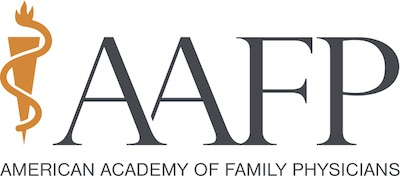Lupus Foundation of America and American Academy of Family Physicians Collaborate to Help Improve the Diagnosis and Management of Lupus
 Today, the Lupus Foundation of America (LFA) and the American Academy of Family Physicians (AAFP) announced a collaboration to ensure family physicians, who can play an important role in the lupus diagnosis process, have the tools and resources to recognize the signs and symptoms of lupus and help people with lupus better manage their disease. Lupus is an unpredictable and misunderstood chronic autoimmune disease that ravages different parts of the body. It is difficult to diagnose, hard to live with, a challenge to treat, and can be fatal.
Today, the Lupus Foundation of America (LFA) and the American Academy of Family Physicians (AAFP) announced a collaboration to ensure family physicians, who can play an important role in the lupus diagnosis process, have the tools and resources to recognize the signs and symptoms of lupus and help people with lupus better manage their disease. Lupus is an unpredictable and misunderstood chronic autoimmune disease that ravages different parts of the body. It is difficult to diagnose, hard to live with, a challenge to treat, and can be fatal.
The Lupus Foundation of America and AAFP worked together to develop educational resources and tools in English and Spanish that are now available for family physicians, people who may be experiencing signs and symptoms of lupus, and people diagnosed with the disease. Resources and tools include:
- A new continuing medical education course available to help family physicians recognize the signs and symptoms of lupus and increase confidence in making an accurate diagnosis.
- Co-branded fact sheets to help people with lupus and those who are experiencing signs and symptoms of the disease understand lupus, the diagnosis journey, treating lupus, and care management.
- A new first-of-its-kind Lupus Care Management Plan that people with lupus can use to prepare for their appointments with their care team, as well as set goals, track symptoms, get tips for communicating with their care provider, and manage overall health.
The tools and resources are available via the Lupus Foundation of America and AAFP’s websites, as well as on familydoctor.org, AAFP’s website for consumers.
“Improving the time to diagnosis is a key strategic outcome for the Lupus Foundation of America and working with health care providers is critical to meeting this goal,” explains Stevan W. Gibson, president and CEO, Lupus Foundation of America. “Our collaboration with the American Academy of Family Physicians is designed to help bridge gaps in lupus diagnosis and care and provide educational resources for both family physicians and their patients to aid in diagnosing and managing lupus.”
Lupus is difficult to diagnose and treat, in part, because signs and symptoms of the disease differ between individuals. Its health effects can range from a skin rash to a heart attack. People experiencing health issues that could be lupus often see a variety of providers to address their symptoms, with family physicians often being the first stop in the diagnosis process, especially in areas that may be further from a large city or major health system.
The Lupus Foundation of America has found that on average it takes nearly six years for people with lupus to be diagnosed, from the time an individual first notices their lupus symptoms. Getting an early diagnosis of lupus is critical to preventing long-term consequences of the disease.
“Family physicians can play an important role in early diagnosis and long-term care for people with lupus,” according to Amy Mullins, MD, AAFP director for quality and science. “These new resources can help physicians better identify signs and symptoms of lupus to accelerate the diagnostic and treatment process.”
Funding for these tools and resources was made possible in part by a cooperative agreement with the Lupus Foundation of America from the Centers for Disease Control and Prevention (CDC).
More information about lupus signs and symptoms is available at lupus.org.



